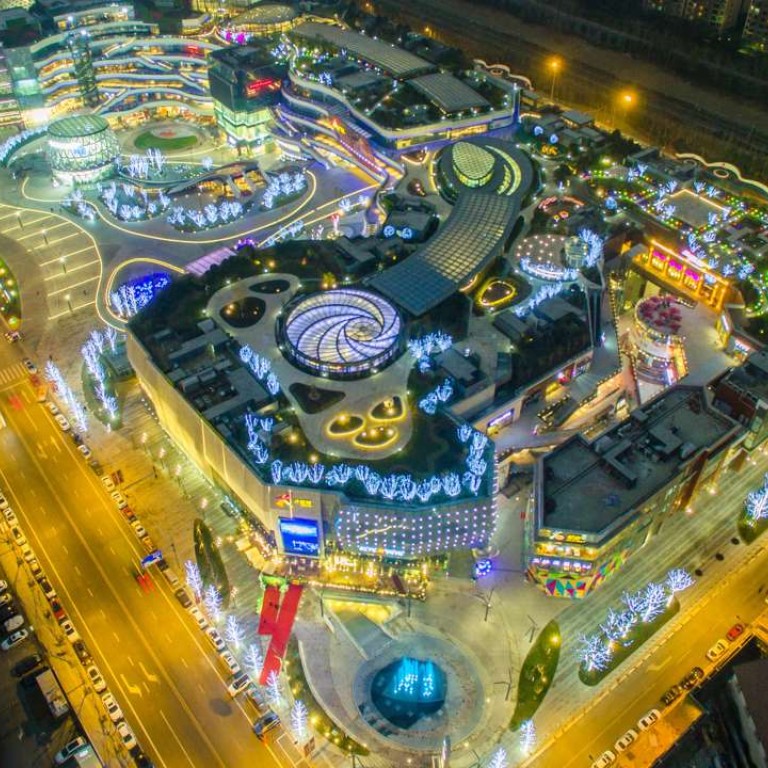
Cofco’s Joy City adopts asset light approach to China shopping mall growth
Chairman of Cofco’s commercial property arm targets 20 mainland malls by 2020
Joy City, the Hong Kong-listed commercial property arm of Cofco, mainland China’s biggest food supplier, has continued to expand at a steady pace, successfully opening seven malls in nearly a decade, despite increasing competition.
Zhou Zheng, chairman and general manager of the developer, said that as a young mall operator it has been putting particular effort into maintaining quality to ensure it builds customer confidence and branding. But the company is now ready to usher in a faster period of growth and is eyeing more asset-light projects in which it can offer its branding and management expertise to struggling department stores. This will grow its mall portfolio at lower cost, with a target of 20 malls by 2020.
Joy City has not expanded quickly until now. What’s the reason?
We have opened one or two new malls a year. Some firms have opened very fast, but they don’t cultivate them. We have set our own pace and focused on establishing a sound business model, including building our team and operations, and being innovative.
We’ve also made a lot of effort to create enjoyable scenes for customers. For example, the architectural design of Chengdu Joy City incorporates elements of the local Jiuzhai Valley National Park, with four changes of season. We would never sacrifice quality for scale.
Now we can speed up because the company is entering maturity. We are eyeing asset-light projects to realise faster growth. Not every company can succeed in an asset-light business, as it requires a proven track record of successful projects. We are confident because we have built a solid foundation.

We are gradually becoming a pure commercial real estate developer and our target is to open or operate more than 20 malls by 2020. In addition to our current seven stores, we have two more under construction, one in Hangzhou and one in Tianjin. Holding more commercial properties means we can ensure stable income within what is an anti-property market cycle.
We will focus on top-tier city secondary business districts and prime locations in second-tier cities. Besides buying land and carrying out the construction by ourselves, we are also seeking cooperation opportunities.
A number of the malls have very good locations but have encountered difficulties in their operations, especially in second-tier cities such as in Xi’an and Hefei. They came to us and asked us to offer them brand name and management expertise.
Cooperation could become an important way forward for our development as we don’t need to invest much and can gain existing projects located in prime spots, which is rare today amid fierce competition for land. Most asset-light projects can be rolled out one year after renovation. That could lower our costs and shorten our construction periods, as our normal projects take at least three years from land acquisition to opening.
Tianjin Joy City will be our first asset-light project and is scheduled to open in December this year.
We are also in negotiation on two more asset-light projects. In the short term we hope asset-light projects will account for 20-30 per cent of our total assets and that will increase to 50 per cent longer term.
What is your business model for asset-light projects?
In general, we would take a 10-20 per cent stake in a project at the beginning and require an option to buy more shares at the original price later. In that way, we can receive not only management fees and commission from rental income, but can also share in any valuation gain when the project matures.
Returns from this kind of business model can be very high as we only put in around 10 staff and use exiting Joy City systems to help reposition and lease a shopping mall. Owners take care of construction.
For our first Tianjin project, however, we didn’t buy a stake as it included hotels and office buildings, which from our perspective were not operating well. But we have the option to buy later.

Our profit fall last year was mainly because of a decline in residential sales. Rental income alone still increased 8 per cent. We have been strict in creating a mix of tenants and in future we will continue being creative in finding tenants and building attractions for growth. We would also look at complex opportunities to sell apartments and office buildings to bring quick cash flow.
At the same time we will optimise our labour structure and standardise management, as well as seek more asset-light projects to lower costs. We hope to maintain stable profit growth, and expect a 10 per cent increase in rental income this year.
Do you think the market is slowing?
There is an oversupply of shopping malls in some areas and we feel the pressure. China is just a middle-income country, but as the economy and personal income is still growing there is room for consumption to pick up. We see potential in cities such as Qingdao, Wuhan and Chongqing.
In the cities we have already entered, such as Shenyang and Chengdu, we must lead the market to avoid being eliminated. Only in that way, can we take the initiative in increasing opportunities to buy depressed projects at a discounted price.

